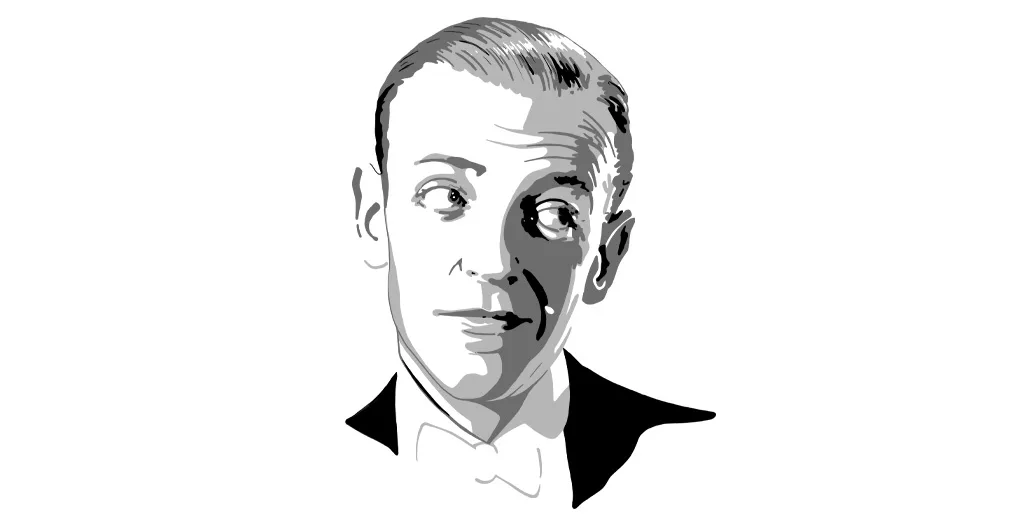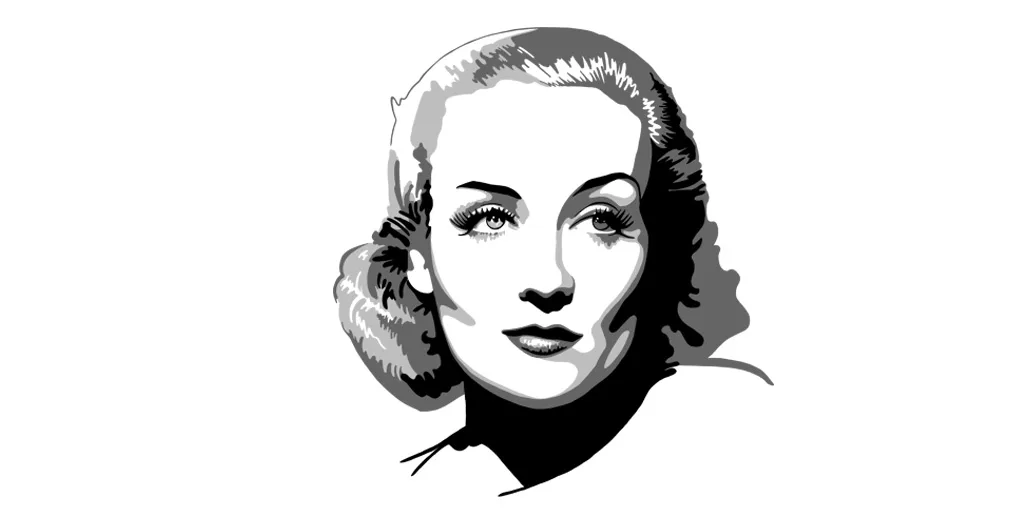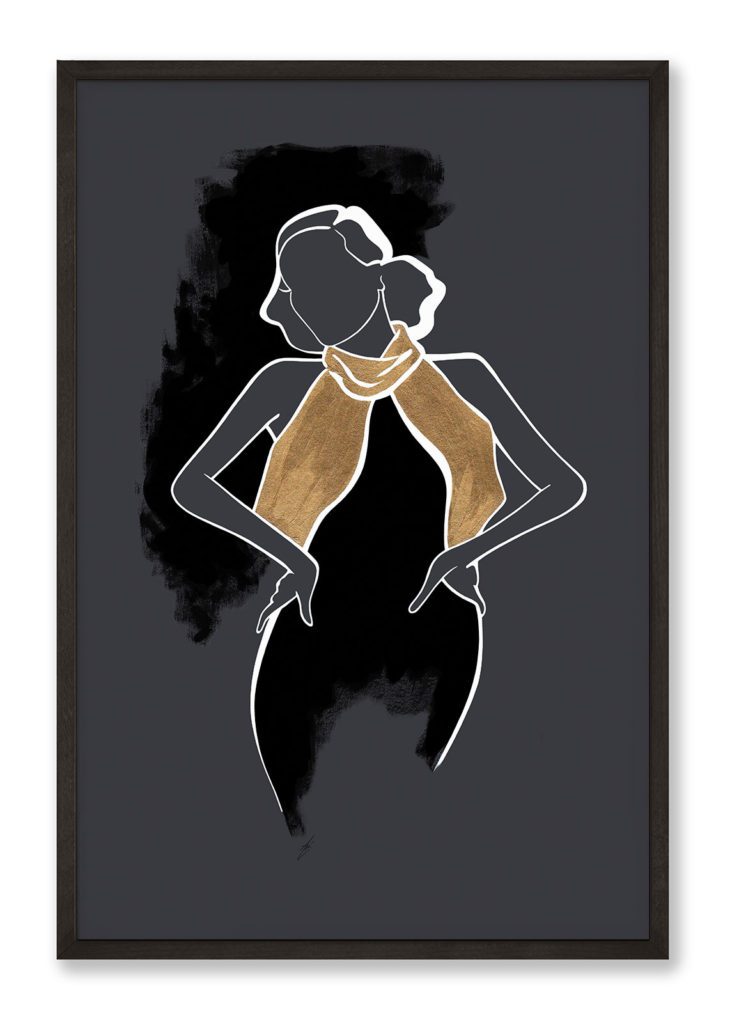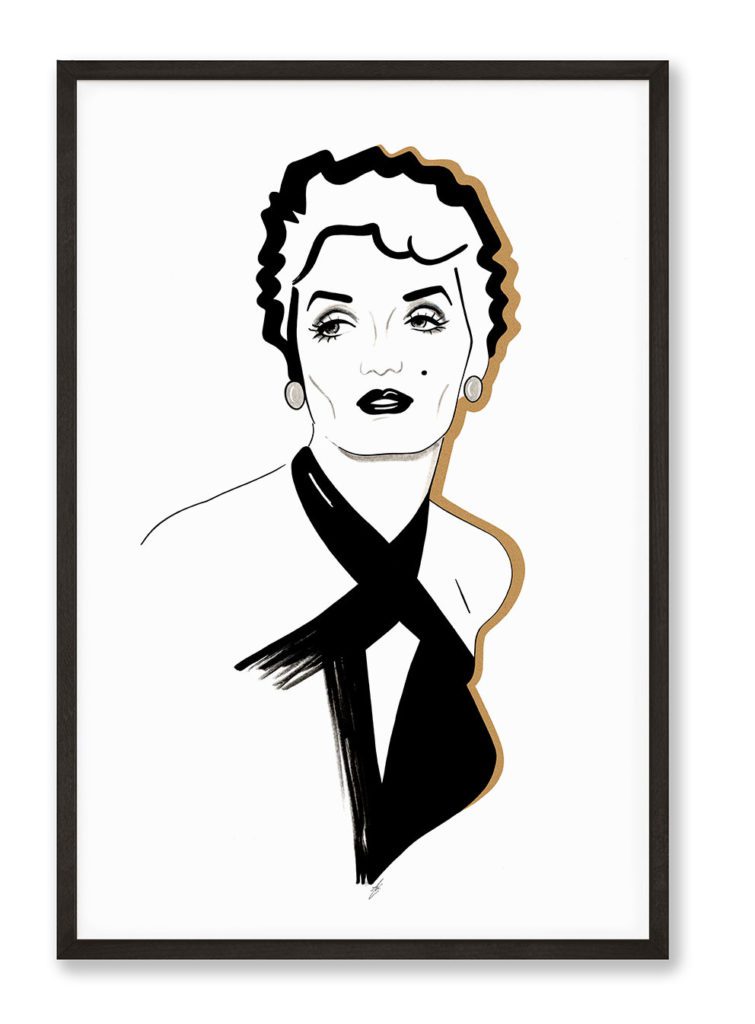Fred Astaire
Hollywood's Grand Master of Musical Films




Hi, I'm Kate!
What I am most passionate about is to inspire you to see that your life is your own and biggest masterpiece.
Fred Astaire is probably the best-known musical performer of all of Hollywood and according to the American Film Institute the fifth greatest male star of Classic Hollywood. He could act, sing and dance, won many accolades and made his mark on a genre like hardly any other.
LISTEN TO THE PODCAST
SUBSCRIBE TO THE PODCAST
Beginnings
Fred Astaire was actually born Frederick Austerlitz on May 10, 1899 in Omaha, Nebraska. His parents had Germany, Alsatian and Austrian roots. His father had moved to Nebraska to pursue work in the brewing trade and was subsequently employed by the Story Brewing Company. Fred’s mother was never really happy in Nebraska and wanted to get away. Her two kids, Fred and his three years older sister Adele, seemed to be the means to achieve that. She planned to have them perform a sister-brother-act at the vaudeville circuit and made them learn dancing, properly speaking for the stage, singing and playing instruments. She also changed their names from Austerlitz to Astaire as Austerlitz was mainly known for the battle. Eventually, when their father got laid off, the family moved to New York to start the children’s career.
Child star
Their first act was called Juvenile Artists Presenting and Electric Musical Toe-Dancing Novelty and was a hit. When they debuted in New Jersey, the local paper wrote „the Astaires are the greatest child act in vaudeville.“
Subsequently, they were able to seal the deal to play the Orpheum Circuit in the Midwest, West and some Southern cities in the US.
Problems arose though, when Adele grew distinctively taller than Fred, which looked inharmonious and simply off. As it was also a great timing because of the child labour laws during that time – so, they took a break from their act. When started again in 1912, they mixed things up, incorporated tap dancing, tango, waltz and other ballroom dances. They got more sophisticated and polished in their skillset. By 1914, Fred Astaire was the one musically responsible for their act. It would still be for some time Adele though that set the tone for the act with her humor and sparkle – which she hugely owed Fred’s immaculate preparation, rehearsing and carefully crafted choreographies. But he worked hard on his dancing technique and would soon outshine his older sister.
Broadway & London’s West End
In 1927, the Astaire siblings became a success on Broadway with Over the Top – a rather patriotic revue they also performed for US. and Allied troops. They followed the success up with The Passing Show of 1918 with a review by Heywood Broun that read: “In an evening in which there was an abundance of good dancing, Fred Astaire stood out … He and his partner, Adele Astaire, made the show pause early in the evening with a beautiful loose-limbed dance.“
In the 1920s, they moved their act across the Atlantic and performed in London’s West End just as successfully as on Broadway. They would alternate between London and New York and performed such successful shows like The Bunch and Judy, Lady, Be Good, Funny Face and The Band Wagon. During his stays in London, Fred Astaire studied the piano at Guildhall School of Music, where he befriended actor and writer Noel Coward.
In 1932, Adele and Fred parted ways and closed their act when Adele went on to marry her first husband, Lord Charles Cavendish. Although this meant a huge change for Fred Astaire as this had been all he had been doing so far, he grabbed the opportunity and started making his own way on Broadway and London with The Divorce, which was quite successful. It was also the first time he partnered with someone else than his sister, in this case Claire Luce. She apparently had to encourage him to approach this partnered dance with more romance – this was something that was crucial in his development and the later success of his movies.
Collaborators Pan & Gershwin
Although Astaire did all his choreographic on his own, he always looked for collaborators to develop new routines and to get feedback on ideas. The most important choreography collaboration was with Hermes Pan, who was his partner on most of his movies with Ginger Rogers.
Another important partnership was with the Gershwin brothers George and Ira. He met George Gershwin first in 1916 when Fred was 17 and George was 18. Their sibling almost the same age. But their first collaboration was only in 1919 for the Broadway show Apple Blossoms. The first songs written specifically for the Astaire sibling by George Gershwin was in 1923, albeit without lyrics. Only in 1924 they made a show together – Lady be Good. Lyrics by Ira Gershwin included. The music by the Gershwins and the movements by the Astaires seemed to be made for each other. They influenced each other’s success and were born to collaborate.
RKO & Ginger Rogers
Astaire made a screen test for RKO – and it was disappointing to say the least. The report on the test read something along the lines „ Can’t act. Slightly bald. Also dances.“ I say something along the lines because there are different versions out there. This is the one Astaire himself provided.
David O. Selznick who had signed Astaire to RKO wasn’t quite sure what to do with Astaire – one of his notes said: “I am uncertain about the man, but I feel, in spite of his enormous ears and bad chin line, that his charm is so tremendous that it comes through even on this wretched test.“
So, RKO first lent him to MGM for his movie debut in the Joan Crawford/Clark Gable movie Dancing Lady, in which he danced with Crawford. Next, he was cast in the Dolores del Rio movie Flying Down to Rio. For the dance in the movie he was paired with Ginger Rogers for the first time and Variety magazine would write about their performance: „The main point of Flying Down to Rio is the screen promise of Fred Astaire … He’s assuredly a bet after this one, for he’s distinctly likable on the screen, the mike is kind to his voice and as a dancer, he remains in a class by himself. The latter observation will be no news to the profession, which has long admitted that Astaire starts dancing where the others stop hoofing.“
That was the start of the glamorous pairing that Astaire and Rogers would become. Although Astaire refused to get back into a fixed pairing as he had done with his sister, he was okay with doing another movie with Rogers. When he realized how popular their pairing had become, he was persuaded to continue their streak of successes.
Partnership with Ginger Rogers
Six out of their nine movies were the biggest moneymakers for RKO – on top of that all of the movies by Astaire and Rogers had such a flair, elegance and artistic skill that all other studios at that time were looking for but could not match.
Astaire praised his partner: “Ginger had never danced with a partner before Flying Down to Rio. She faked it an awful lot. She couldn’t tap and she couldn’t do this and that … but Ginger had style and talent and improved as she went along. She got so that after a while everyone else who danced with me looked wrong.“ And he was quoted to have said: “Ginger was brilliantly effective. She made everything work for her. Actually, she made things very fine for both of us and she deserves most of the credit for our success.”
Basically, they complemented each other in such a way that they helped each other to eternal stardom that neither could have established on their own. As Katherine Hepburn put it: “He gives her class and she gives him sex appeal.“
Creation of the Modern Hollywood Musical
While Busby Berkeley musicals informed the first Hollywood musicals, it was Fred Astaire that reinvented the genre and set the tone for all of Hollywood to come. Most important and obvious are two innovations that Fred Astaire is credited for.
First, He wanted to have a closely tracking dolly camera film the whole dance sequence in as few shots as possible. The result was the effect of having one stationary camera filming the whole dance in a single shot. Astaire’s famous quip on this: “Either the camera will dance, or I will.“ This was done for all his movies until he was overruled by Francis Ford Coppola in 1968. This was strikingly different from Busby Berkeley’s direction with lots of cuts, close ups and aerial shots.
Second, he insisted that all dancing and singing was in line with the plot and would help move the movie along. He did not want dancing sequences to be stand-out spectacles that the movie could go without actually.
His formula, if you can call it like that, were three dances per movie – one in which Astaire would perform solo, he called it his „sock solo“, the second would be a comedy dance routine with a dance partner and then there would be one romantic dance routine with a partner, that usually was the climax of the movie and was thus quite elaborate.
1940s without Ginger
Eventually, in 1939, Astaire left RKO and ended partnership with Ginger Rogers – they would only reunite in one more movie, The Barkleys of Broadway, in 1949, when Ginger Rogers stepped in for Judy Garland.
Instead Astaire made movies with other dancers like Eleanor Powell, the most celebrated tap-dancer back then as well as Rita Hayworth, Joan Leslie, Paulette Goddard, Lucille Bremer and Bing Crosby. He also partnered with Gene Kelly for the musical revue Ziegfeld Follies in 1945. As some of these movies were not quite as successful and some even bombed at the box office, Fred Astaire announced his retirement in 1946 at 47 years of age. He instead concentrated on his horse-racing interests and founded the Fred Astaire Dance Studios headquartered in Longmeadow, Massachusetts in 1947. He would later sell the studio and it turned into a franchise chain operating more than 150 Fred Astaire Dance Studios in the world.
Revival of Success
But of course, his retirement did not last too long. He came back just the next year replacing friend Gene Kelly in Easter Parade opposite Judy Garland and when this pairing proved successful signed for the Barkleys of Broadway opposite Judy Garland again – but as Garland was unable to film, Ginger Roger stepped in and revived their on-screen chemistry and skills. Fred Astaire was back in demand and filmed several more movies for MGM, including Three Little Words, Royal Wedding and The Band Wagon. When MGM dismissed most of its stars because of the advent of television, Astaire branched out to other studios and would do Daddy Long Legs opposite Leslie Caron at 20th Century Fox in 1955, Funny Face opposite Audrey Hepburn and Kay Thompson in 1957 and Silk Stockings co-starring Cyd Charisse in 1957 for MGM.
After that he retired for good from musical movies – after 25 years and 30 musical films.
Television
Instead he focused on the new medium of television. He made a series of four very successful Emmy Award winning musical performances for TV in 1958, 1959, 1960 and 1968. Each special paired him with actress and dancer Barrie Chase – a partnership that inspired a new dance creativity in Astaire.
He also played non-dancing characters in a number of movies in the 1950s through to the 1970s as well as on television series like for example the father of Robert Wagner in It Takes a Thief, or a star episode on Battlestar Galactica in 1979.
He wrote his own autobiography, which was published in 1959 and was titled Steps in Time.
Singer
Although Fred Astaire did not really believe in his singing skills, he was one of the best singers in Hollywood. He was able to transport the grace and elegance he was known for in his dancing to his singing. He may not have been the most skilled in singing, but he performed and projected the songs he sung with his usual suave, great lyricism, perfect diction and phrasing. Fred Astaire also tried his hands at songwriting and wanted to become a song composer.
In 1952, Fred Astaire recorded a four-volume album titled The Astaire Story, which gave a musical overview of his career. The album would receive a special Grammy all of Fame Award in 1999.
Style of Dancing & Working
Fred Astaire was a very talented and skilled dancer who could convey any emotion with his dances – from deep emotion to lighthearted comedy. But he was best known for his technical superiority, frequent rehearsal and attention to the most minute detail. His professionalism, preparation and immaculate performance skills were best shown in 1952. They filmed one of his solo dance numbers with Astaire clad in a humble costume but later decided they wanted it to be more elaborate. They reshot the scene. In 1994, the documentary, That’s Entertainment III shows these two dance sequences side by side – and they are completely identical, down to the smallest gestures or mimics.
All his performances were elegant, graceful, technically perfect, precisely executed and original. He once even danced on the walls. He called his dance style „outlaw style“ because he mixed and matched elements from different dance styles and made them his own. As he created all the choreographies by himself – albeit with the help of collaborators – he was always adamant that there should not be a single superfluous movement. Everything during a dance routine should build up to a climax and stop.
Some of his dance routines were built around something surprising like dancing with his own shadow or dancing on the walls in Royal Wedding. Astaire and his collaborators would usually think of these ideas way beforehand and cache them for a later point in time and a movie they could use it in.
Although the end result, the performances, were usually flawless and extraordinary, his way of working was sometimes frightening to those working with him. Astaire was known for his perfectionism and did not accept anything less from anyone working on the movie. The dance sequences were created and rehearsed in a closed space for weeks until they were perfect, then they would work with.a rehearsal pianist to get the dancing and the orchestra in synchronization. Shortly before filming would begin, Astaire would rehearse intensely for another two weeks, record the music and singing. In the end, shooting the scenes was a quick undertaking as everything was rehearsed to perfection. It saved immense production costs.
But his perfectionism was not exclusive to the dance routines as Ginger Rogers noted: “Sometimes he’ll think of a new line of dialogue or a new angle for the story … they never know what time of night he’ll call up and start ranting enthusiastically about a fresh idea … No loafing on the job on an Astaire picture, and no cutting corners.”
Despite this admirable work ethic and his extraordinary talent and skill, Fred Astaire lacked confidence – as he himself would say: “I’ve never yet got anything 100% right. Still, it’s never as bad as I think it is.“ And VIncente Minelli said about him: “He lacks confidence to the most enormous degree of all the people in the world. He will not even go to see his rushes … He always thinks he is no good.”
Relationships
Phyllis Potter – In 1933, 34 year-old Fred Astaire married Phyllis Potter, who was nine years his junior. Potter, a New York socialite who had previously been married to Eliphalet Nott Potter – she brought one son into the marriage and they had two more kids, Fred Astaire Jr. and Ava Astaire. Unfortunately, Phyllis died at the age of only 46 after 21 years of marriage. Her death from lung cancer was devastating to Fred Astaire who even considered working completely, but went on for distraction.
Robyn Smith – At the age of 81, Fred Astaire married for a second time. His wife was Robyn Smith, a jockey who rode for Alfred Gwynn Vanderbilt Jr. and who had graced the cover for Sports Illustrated beforehand. She was 45 years his junior.
Friendships
Fred Astaire was immensely private, but was close friends with fellow stars David Niven, Randolph Scott, Clark Gable and Gregory Peck. Niven even described him “a pixie—timid, always warm-hearted, with a penchant for schoolboy jokes.”
Death
Astaire died of pneumonia on June 22, 1987, at the age of 88. His body was buried at Oakwood Memorial Park Cemetery in Chatsworth, California.
Style
Fred Astaire was alongside Cary Grant „the best dressed actor in American movies“. He was always immaculately made up – on screen and off. While he was famous for sporting top hat, white tie and tails, he actually hated the get-up and loved to wear different styles. He preferred a more casual style with jackets, shirts and slacks One of the style details that Ginger Rogers would take up in one of their movies was a silk scarf or tie instead of a belt holding up the slacks. It was a very particular style detail. When scanning his movies for the clothes of both Fred and Ginger, it is obvious that Fred Astaire was as much a perfectionist as he was with their dancing routine. He combined patterns and colors and made the boating hat, which very few people can wear, a very stylish accessory. You could always identify Fred Astaire – even if you didn’t see his face, his wardrobe always gave him away. His attention to detail extended even to his socks which were color- and pattern-coordinated.
Miscellaneous
He was very interested in horse-racing and in 1946, his horse Treplica Wong the Hollywood Gold Cup and the San Juan Capistrano Handicap.
He took up skateboarding in his late seventies. He was even awarded a life membership in the National Skateboard Society. When he broke his wrist at age 78 it was while skateboarding in his driveway.
Other hobbies included playing the drums and golfing.
With all my love!
xx






